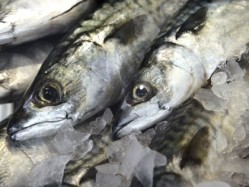On and off the menu: What fish is safe to serve?

There was confusion earlier this week over the news that mackerel, a fish favoured by chefs across the country because of its unique flavour and sustainable credentials, had been downgraded from the MCS' Fish to Eat list to its cautionary list because of over-fishing of stock in the north east Atlantic.
Seafood chefs sourcing mackerel from boats which have used line-caught methods to catch it from areas outside of the north east Atlantic said they would continue to use the fish while others considered removing the fish from menus.
Gurnard, which has appeared more frequently on menus over the last few years, was also downgraded for different reasons. MCS explained was due to a lack of data available on stock levels and concerns over fisheries management.
MCS Fisheries Officer Bernadette Clarke said: "Gurnard, specifically red and grey are now classified by scientists as 'data-limited stocks' meaning there is little information available on stock levels and how much is being fished. Because gurnard have historically been taken as bycatch - accidentally caught when fishing for other species and are not targeted by commercial fishing interests - there are no catch restrictions or minimum landing sizes. If the species is to become commercially targeted sustainably, we need to understand the biology of the stocks and manage them appropriately.”
What to serve
However, while restaurants are advised to exercise caution when considering mackerel and gurnard, there are now certain species of fish and seafood which have been upgraded to the charity's safe to eat list and which it is recommending restaurants use instead.
Herring and coley stocks are back to better levels, the MCS, which works to protect all aspects of sea life, says, meaning they can be eaten 'with a clear conscience'. Other fish now on the list include Dover sole, lemon sole, haddock and whiting from the Celtic sea.
A number of farmed species have also been added to the list, including organically farmed Arctic charr and Gilthead bream; sturgeon caviar and seabass from closed systems fish farming method; tilapia from Zimbabwe that’s Aquaculture Stewardship Council (ASC) certified and ASC certified Pangasius. The list also includes farmed mussel, tiger prawn, Atlantic halibut and salmon, turbot and rainbow trout.
Clarke said it was vital that consumers, chefs and seafood buyers use MCS lists to make the right decision when it comes to buying fish.
“As world population, fish consumption and reliance on fish imports from outside of the European Union increases, the importance of knowing what we are eating, as well as where and how it is caught is essential to allow consumers to make the most sustainable choice for the future of our fish," she said.
Marine Conservation Society’s Fish to Eat list:
- Alaska or Walleye Pollock
- Anchovy
- Arctic charr
- Bream, Gilthead
- Cockle
- Cod, Atlantic
- Coley or Saithe
- Crab, Brown
- Dab
- Haddock
- Halibut
- Herring or Sild
- Mussel
- Pangasius
- Pouting or Bib
- Prawn (coldwater/northern)
- Prawn (King and Tiger)
- Salmon
- Sardine or Pilchard
- Seabass
- Sole (Dover/Common)
- Sole (Lemon)
- Sturgeon, Caviar
- Swordfish
- Tilapia
- Trout
- Tuna (Albacore)
- Tuna (Bigeye)
- Tuna (Skipjack)
- Tuna (Yellowfin)
- Turbot
- Whiting
For the full list of fish to use cautiously and those to avoid visit www.fishonline.org





















